The new modern garden: Flowers, edibles, chickens and creativity
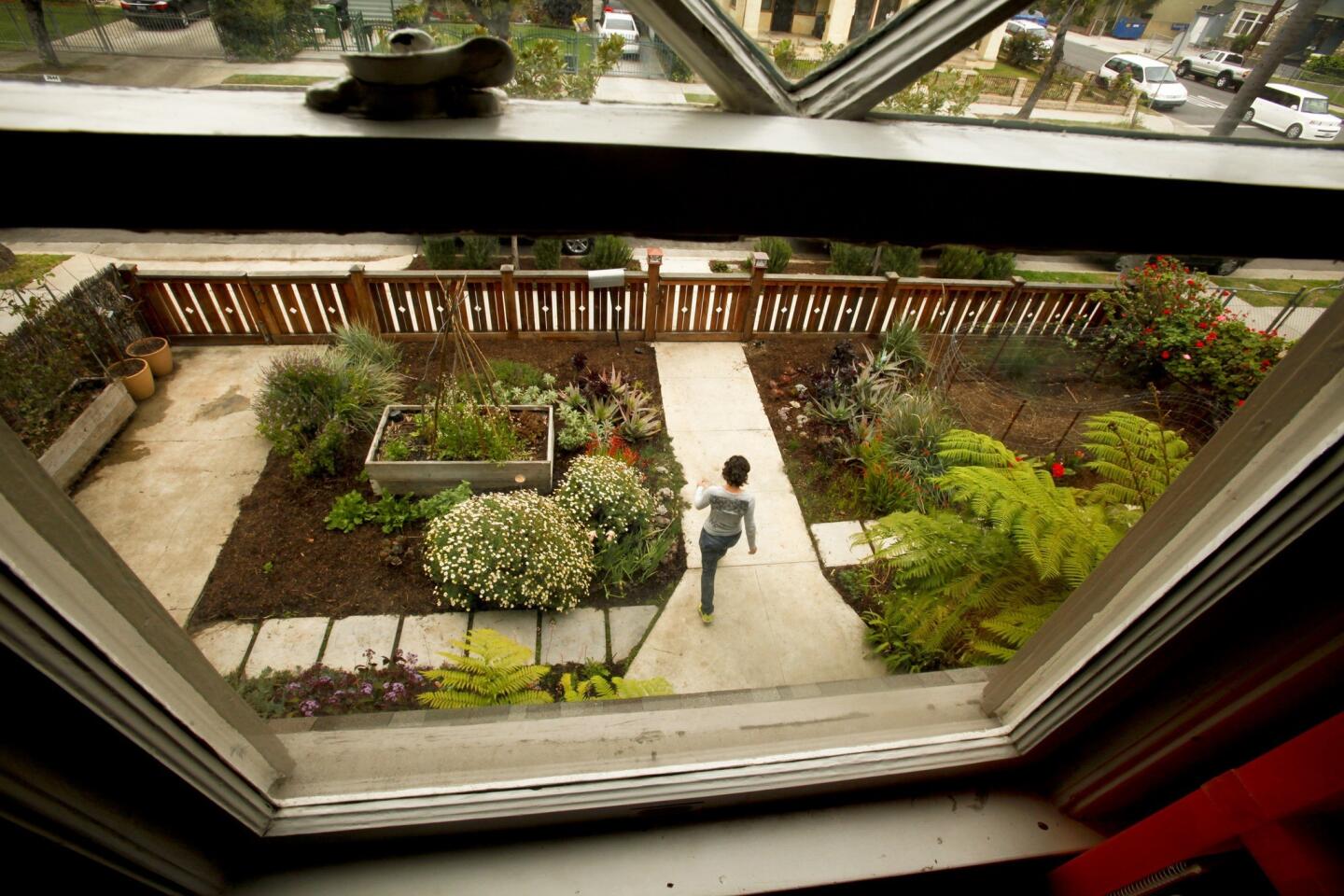
In the West Adams garden of Julie Burleigh, easy-care California natives and hearty gray-blue aloes snipped from a neighbor’s yard share space with ethereal flowers and herbs such as African blue basil and winter savory. Bright red geraniums, figs and other familiar plantings are interspersed with less common white sage and the aromatic edible lovage, which tastes like celery and can be harvested for soups and salads. The plant palette outside the 1908 Craftsman is something of a “live painting,” said Burleigh’s partner, photographer Catherine Opie. “Julie is not afraid of merging things in an atypical way.” (Mark Boster / Los Angeles Times)
Modern garden design doesn’t have to mean soulless rows of plants arranged with geometric precision. At the Los Angeles home of designer Julie Burleigh, a looser hand and the spirit of experimentation have created intriguing plant combinations, a mix of natives, succulents, flowers and edibles that is as colorful as the resident chickens.
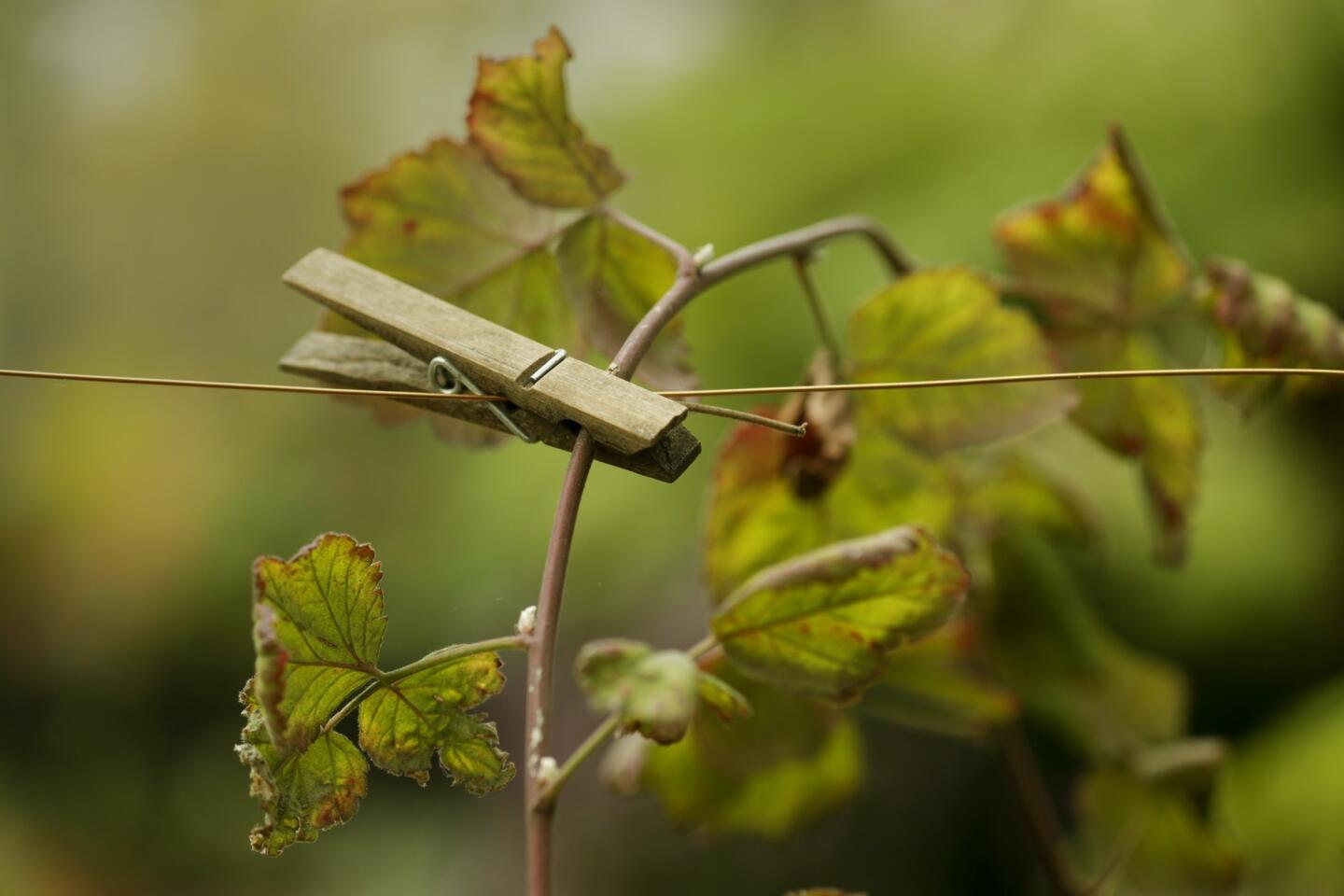
A clothespin holds one of the blackberry vines growing in a container along the driveway. (Mark Boster / Los Angeles Times)
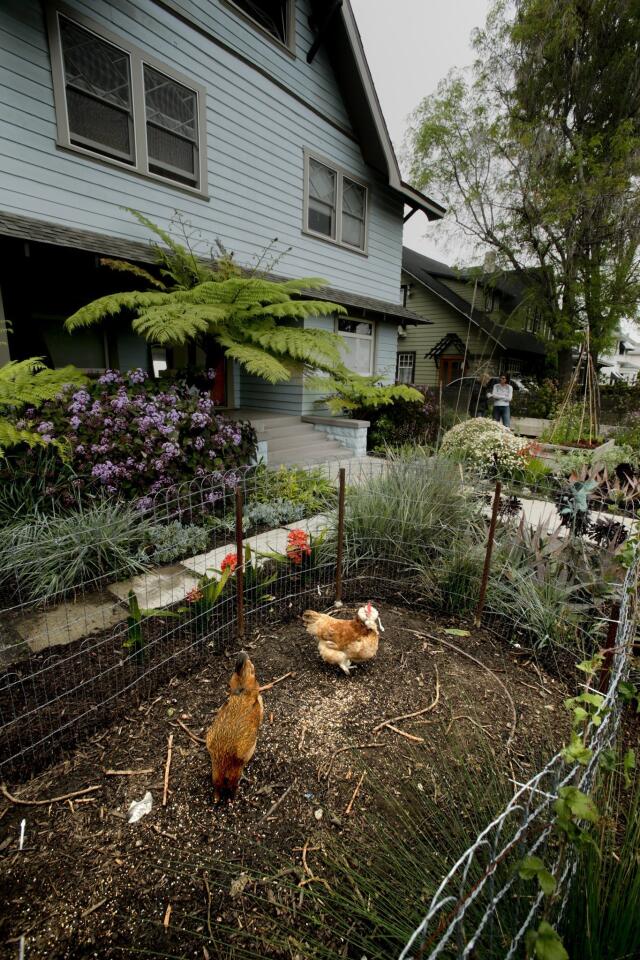
Nothing animated Julie Burleigh’s garden more than the addition of her four chickens — a Salmon Faverolles, two Ameraucanas and a silver-laced Cochin. “I let them have free reign but they were eating everything in the garden — even the succulents,” she said, adding with a laugh: “I am just too vain to let my garden be a mess.” The chickens were also hopping out of the yard. Now an enclosed run connects the coop in the backyard to this area in the front, where passersby on the street can see them. (Mark Boster / Los Angeles Times)
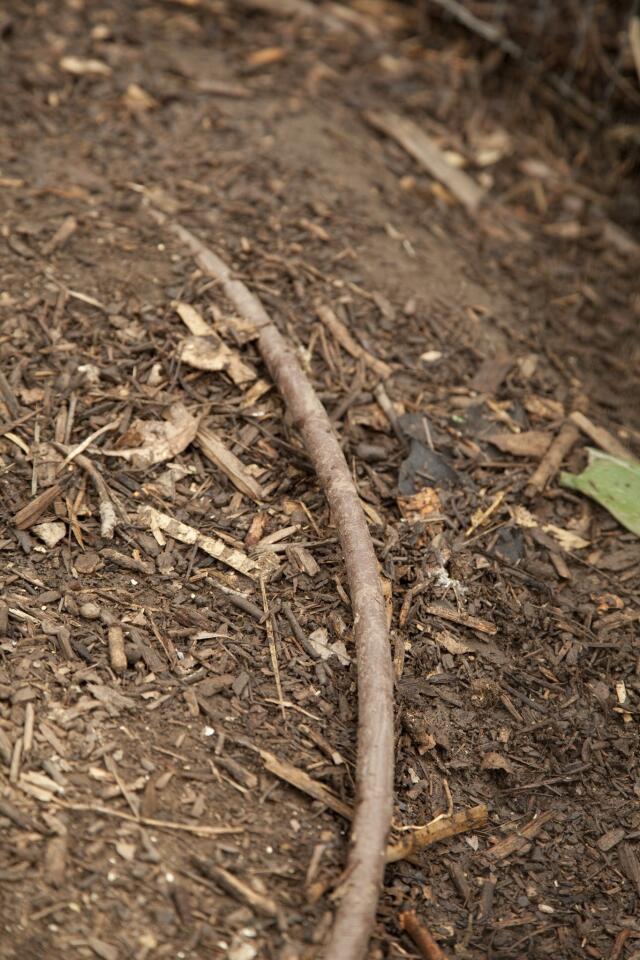
Burleigh installed drip irrigation along the chicken run to draw bugs for the chickens to snack on. “I started getting more eggs from the chickens once they started eating all that protein and enjoying more sun, “ she said. (Mark Boster / Los Angeles Times)
Advertisement
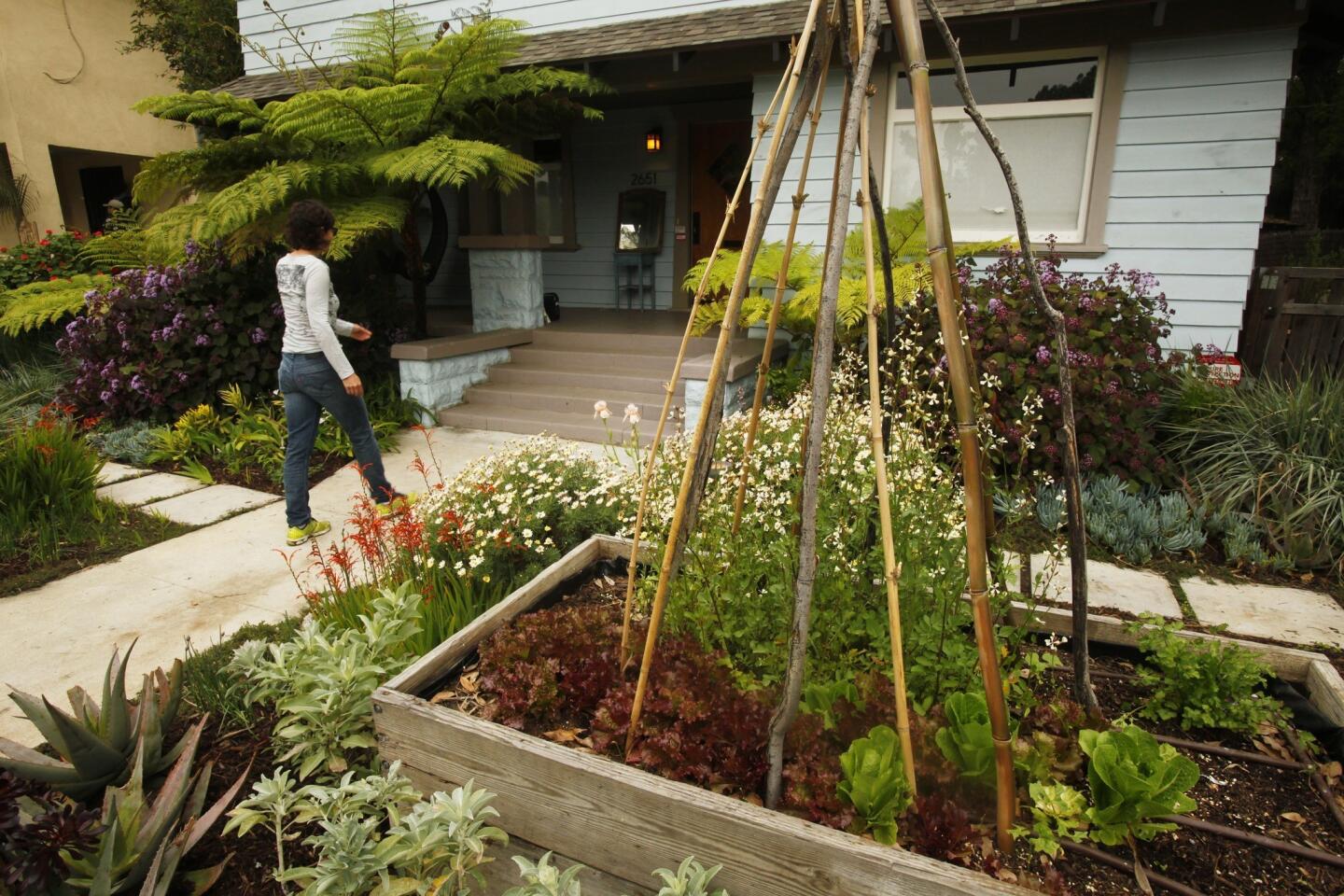
“I wanted people to be greeted by color when they walk in,” said Julie Burleigh, pictured walking toward the entrance of the home. “I wanted it to be lush and textured.” In a raised bed constructed from scaffolding, she planted romaine, oak leaf and red sail lettuces as well as arugula. Burleigh needed to grow vegetables where she had full sun, and that meant the frontyard. “I liked what it added sculpturally,” she said. “It’s a nice way for me to advertise that you can grow vegetables in your frontyard and have it look pretty.” (Mark Boster / Los Angeles Times)
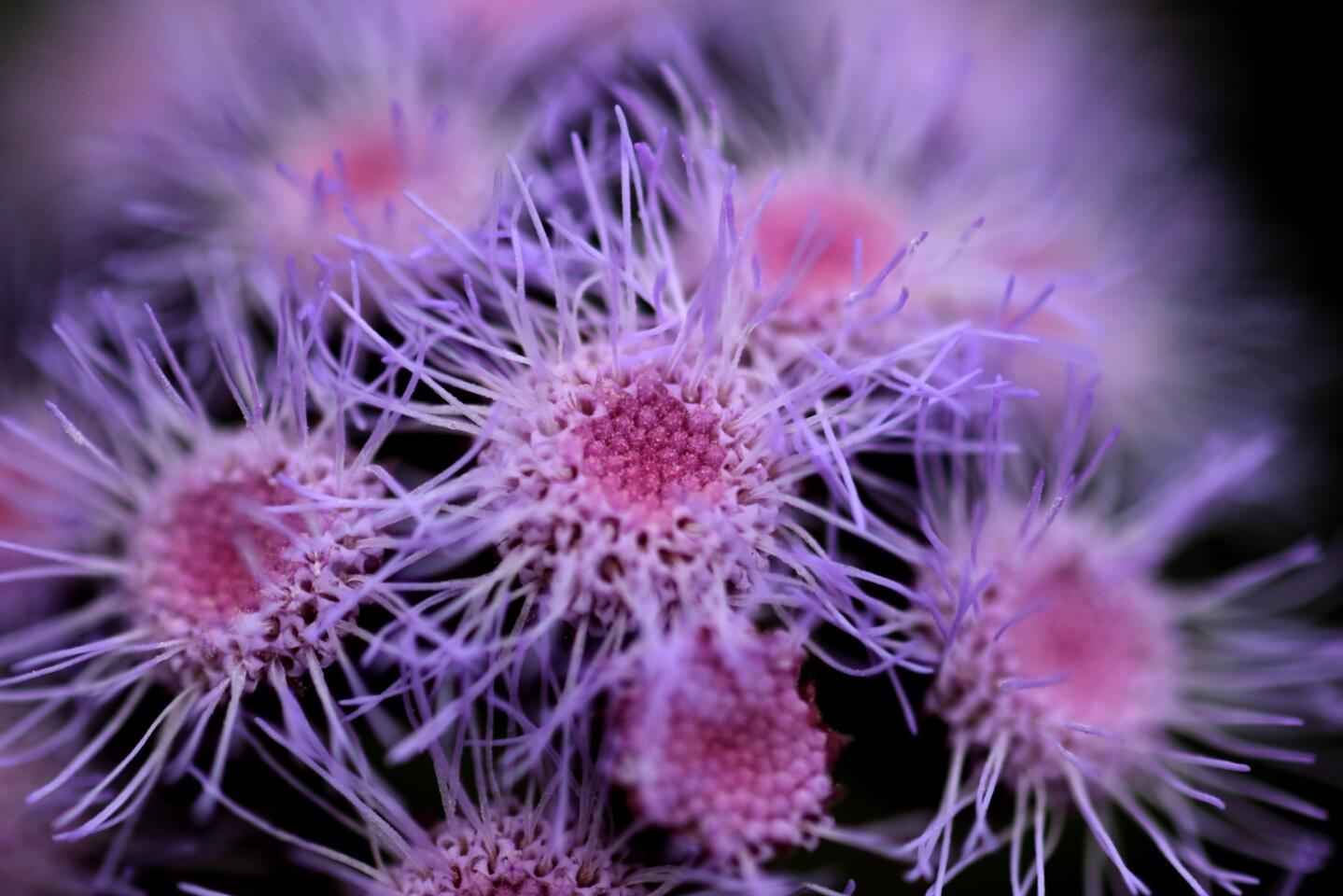
Giant flowering ageratum. (Mark Boster / Los Angeles Times)
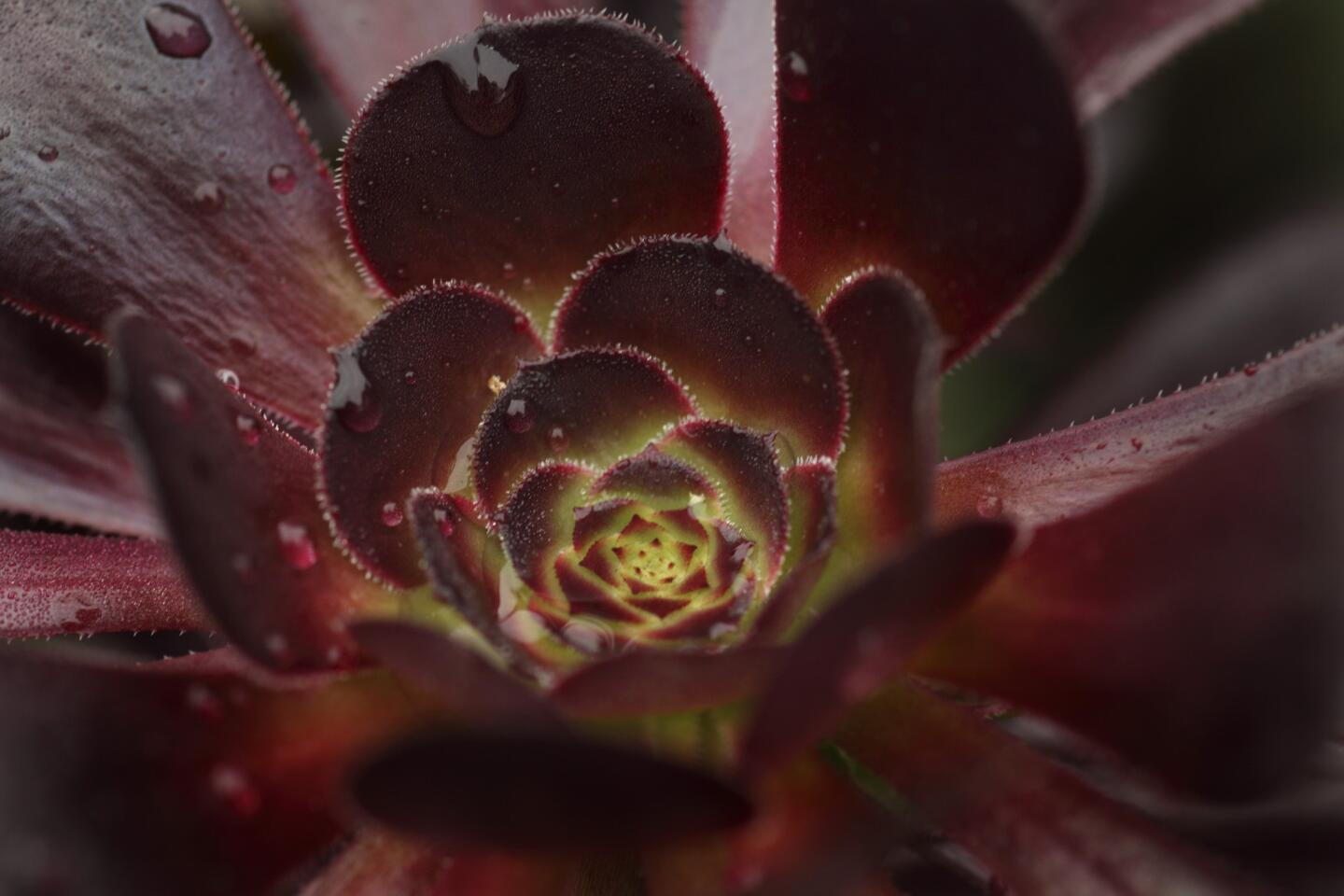
A black aeonium succulent. (Mark Boster / Los Angeles Times)
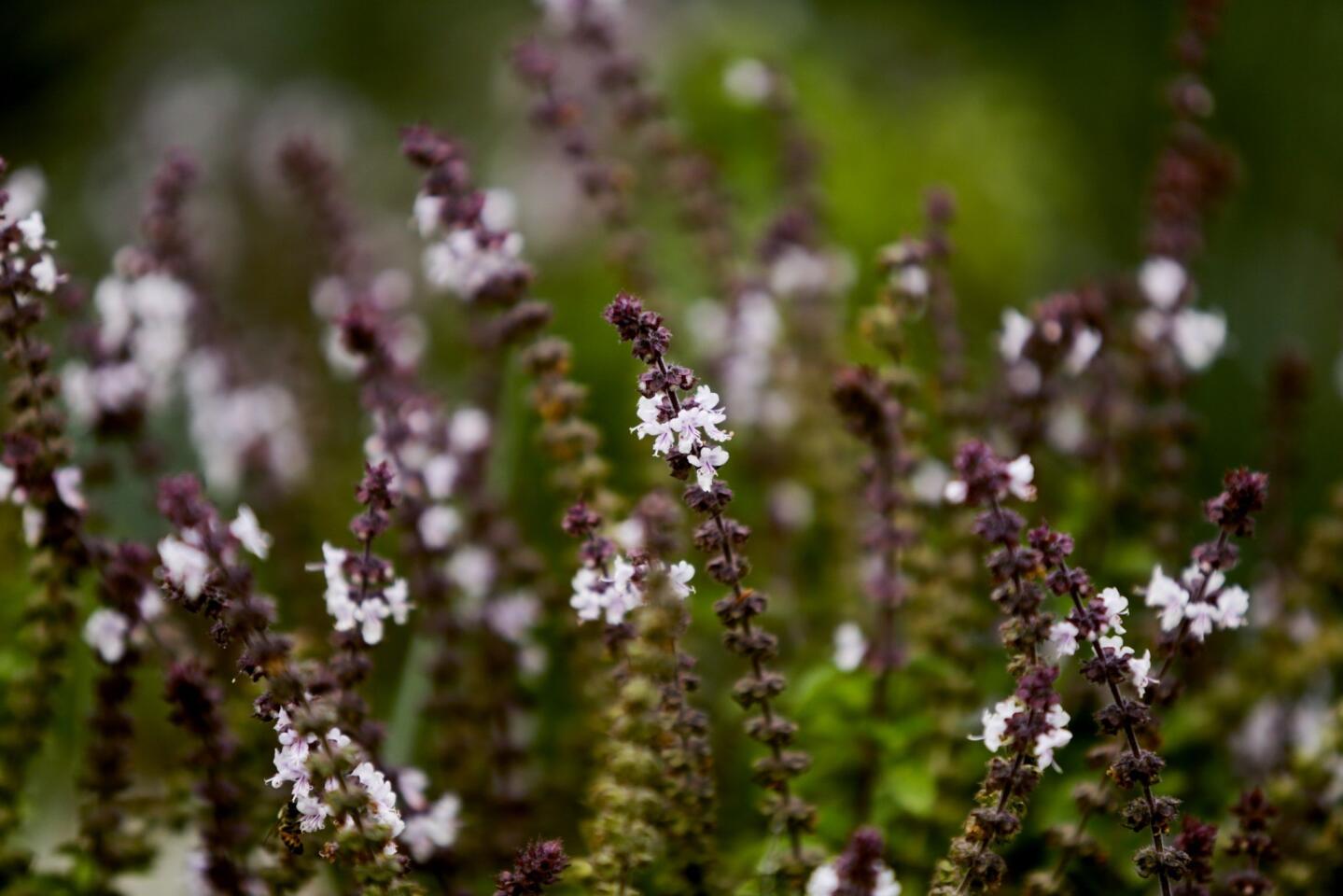
African blue basil blooms year round in Julie Burleigh’s garden. (Mark Boster / Los Angeles Times)
Advertisement
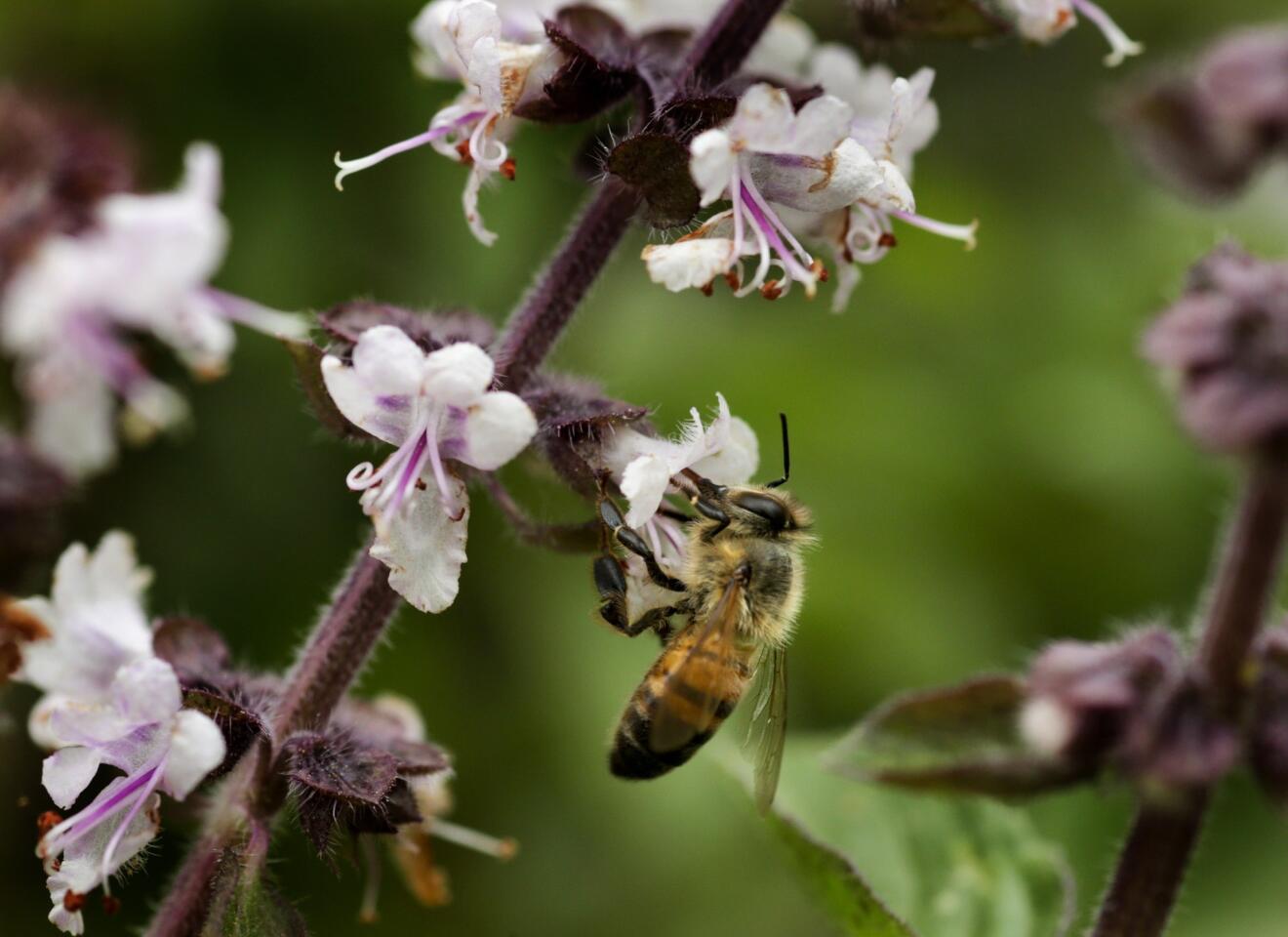
African blue basil flowers draw a bee. (Mark Boster / Los Angeles Times)
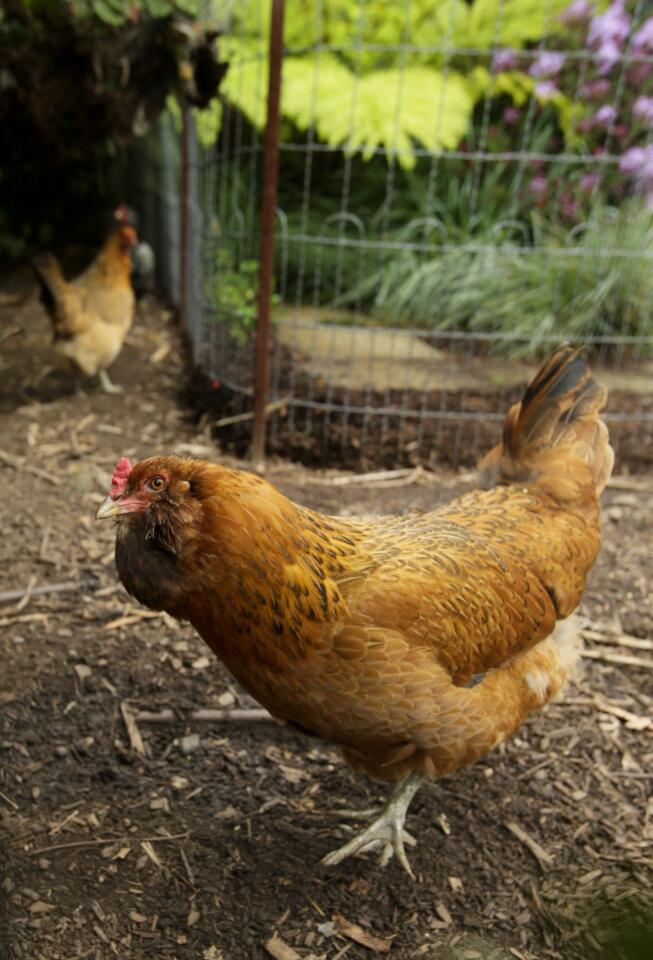
Two of the chickens get some exercise in the part of the run by the street. “I like the lively quality the chickens add to the garden,” Burleigh said. “Our neighbors often stop by with their kids and watch them.” (Mark Boster / Los Angeles Times)
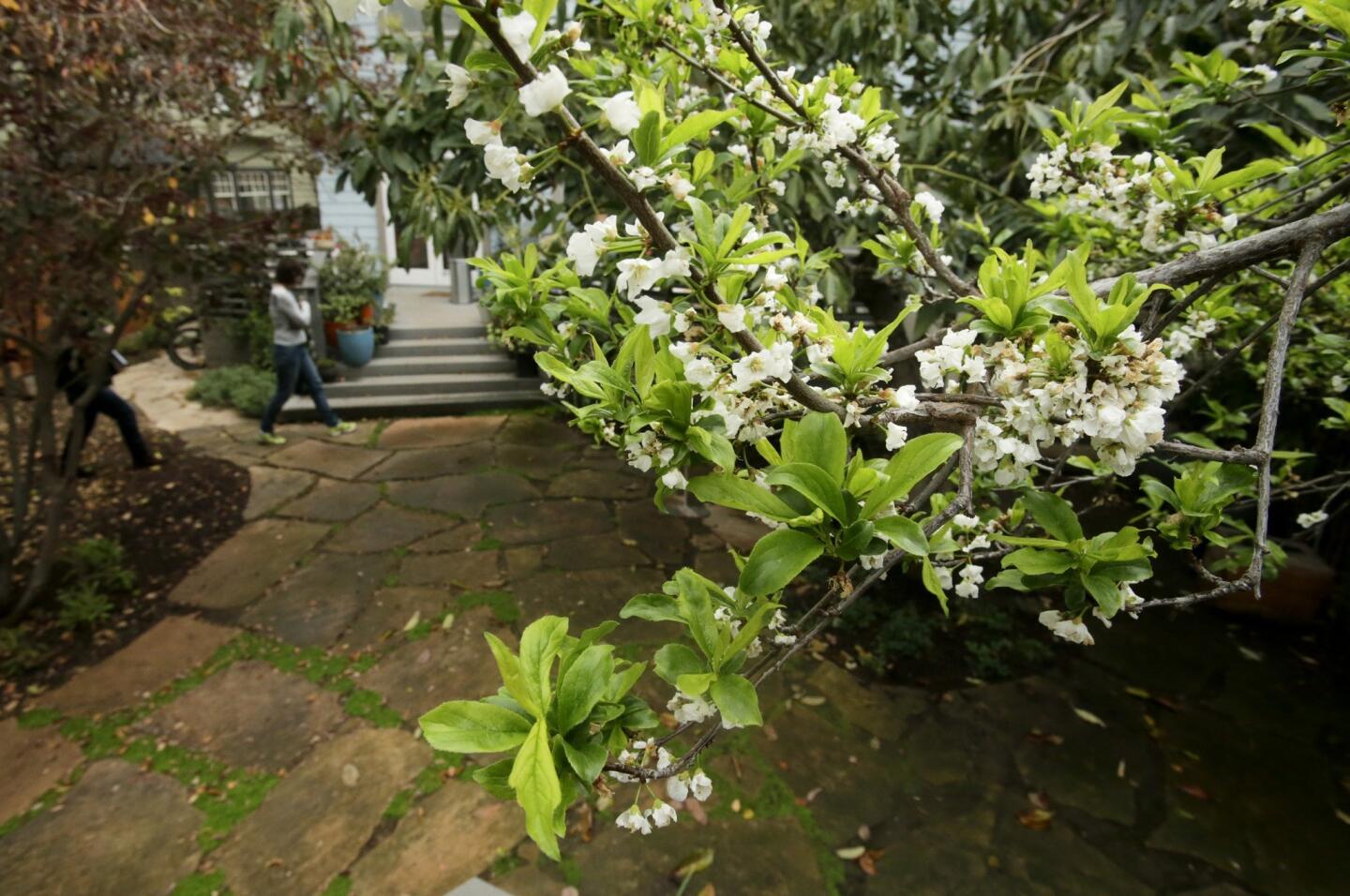
Looking toward the house from Opie’s photography studio, a plum tree is dotted with blossoms. (Mark Boster / Los Angeles Times)
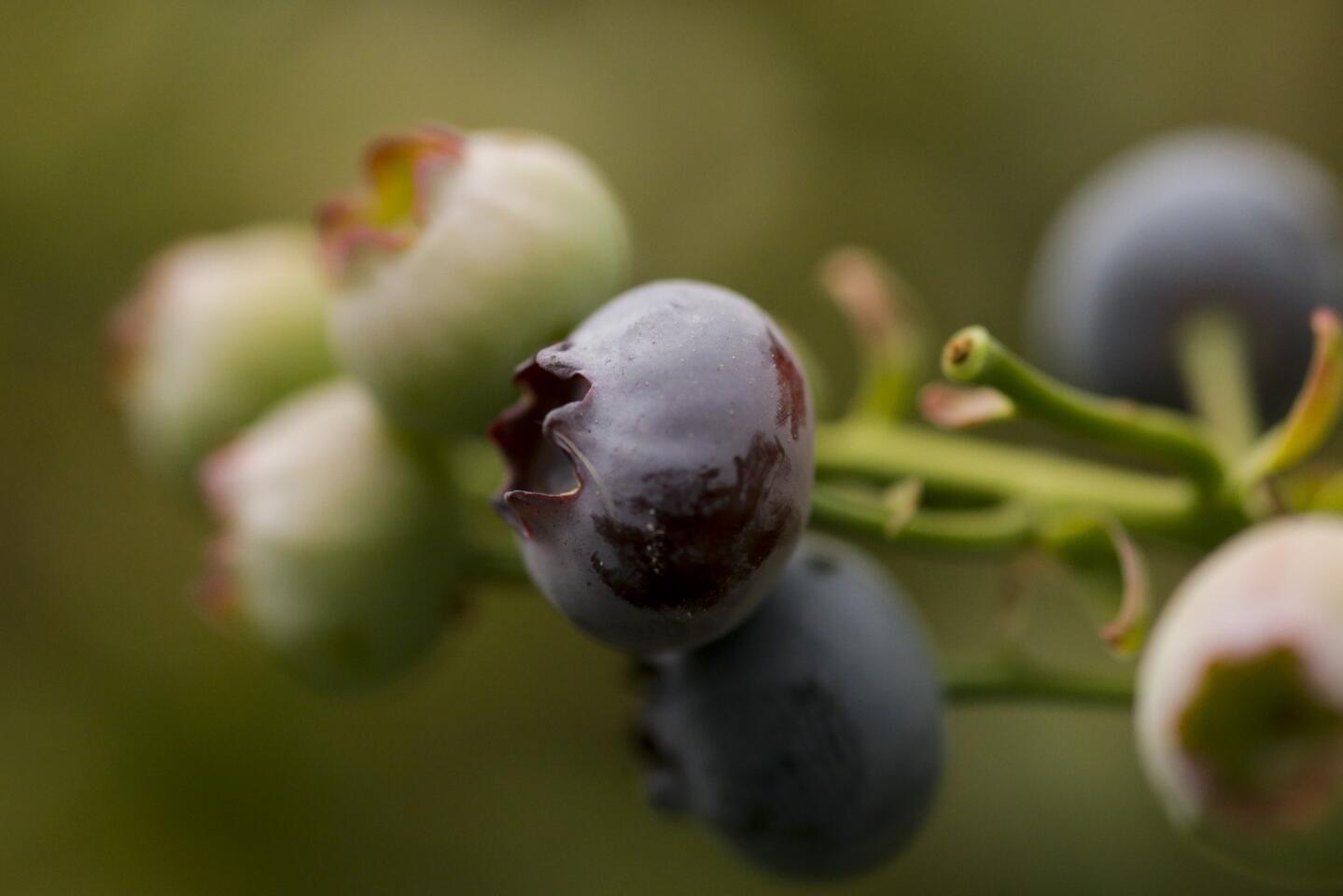
Blueberries grow in a pot on Julie Burleigh’s back porch, where they have thrived for four years. She planted two varieties side by side so they can cross-pollinate. (Mark Boster / Los Angeles Times)
Advertisement
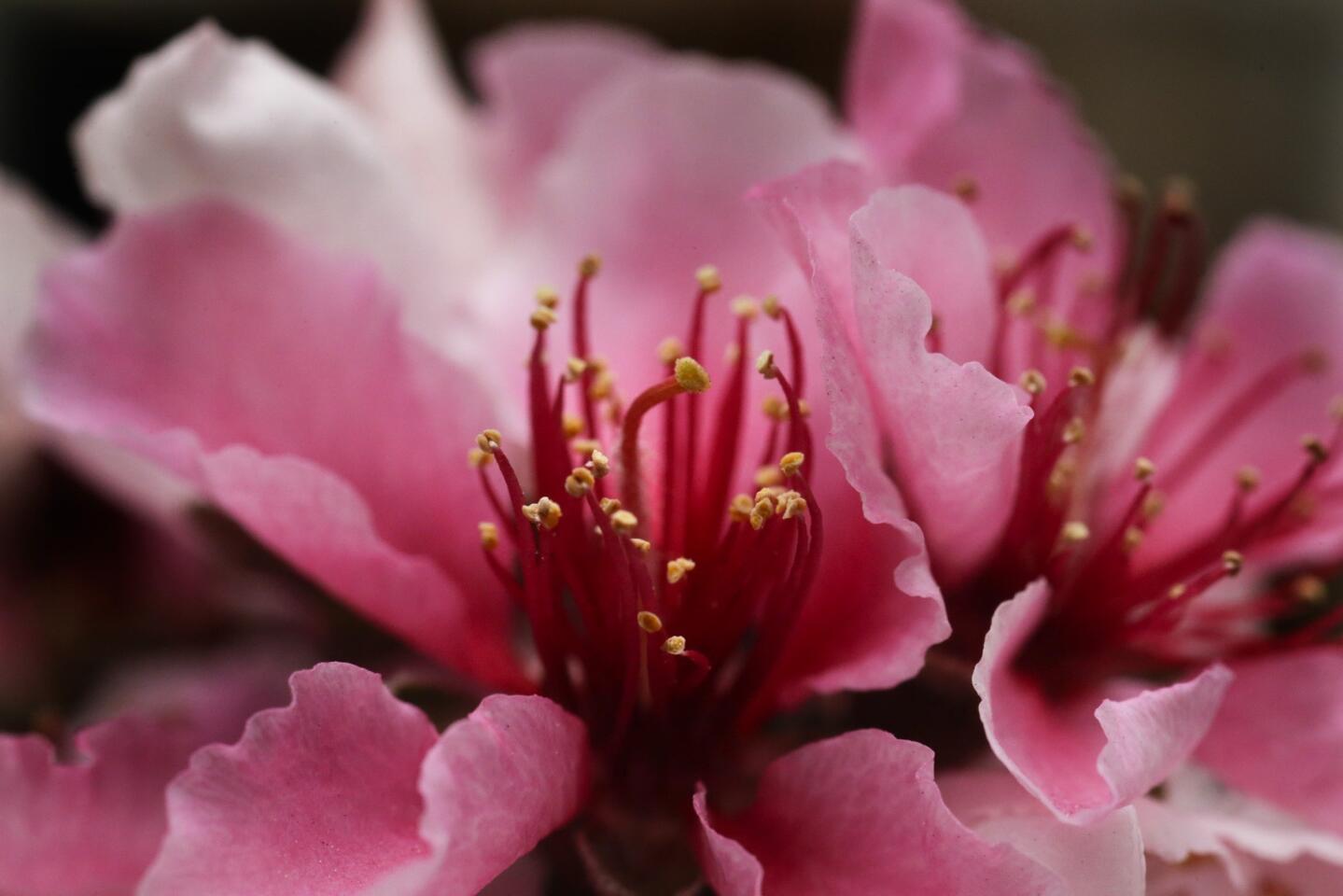
The delicate pink flowers on a dwarf peach tree provide instant color in a container on Julie Burleigh’s back porch. (Mark Boster / Los Angeles Times)
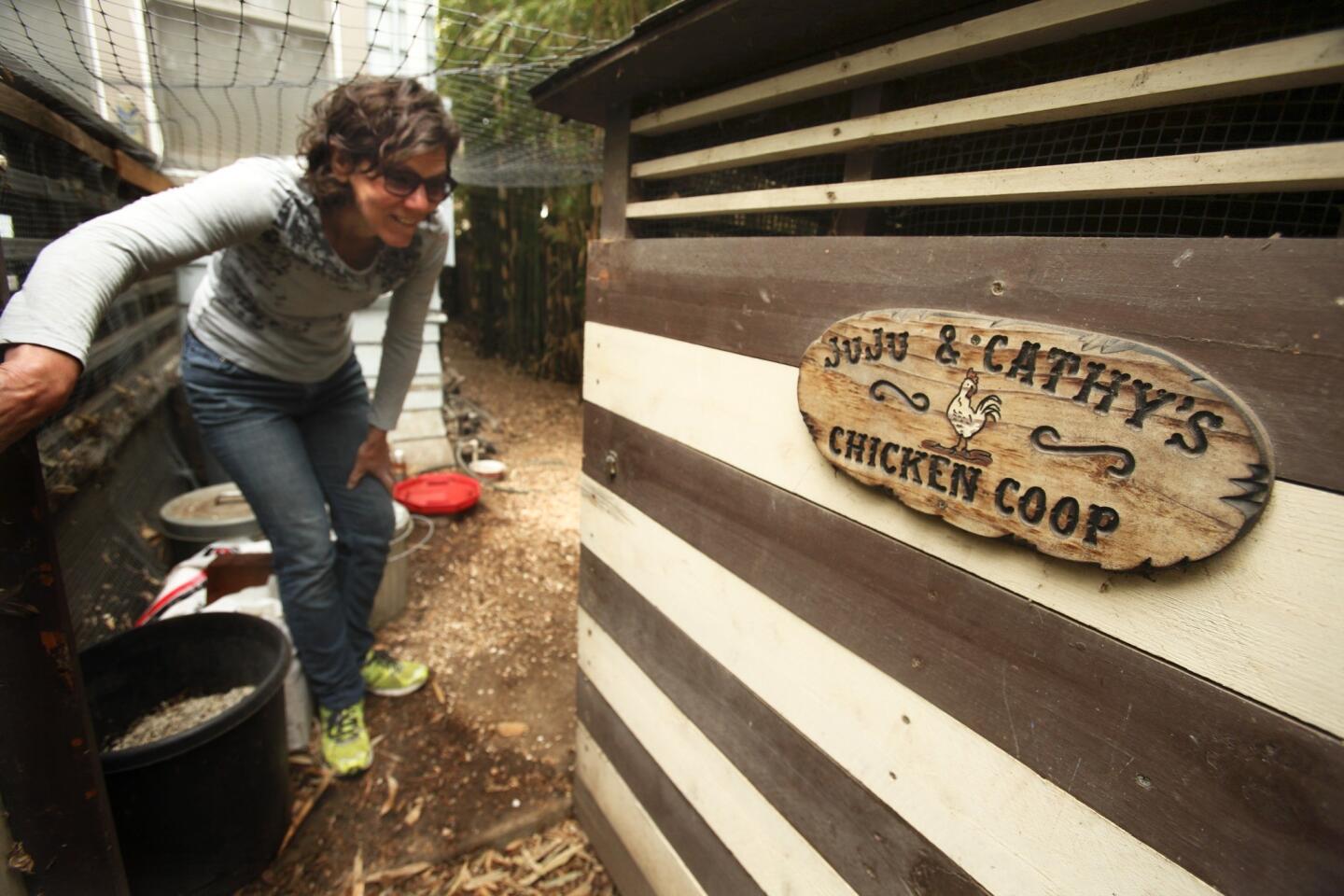
The chicken coop in back was constructed from simple fence paneling painted white and brown, and doors that came from old kitchen cabinets. (Mark Boster / Los Angeles Times)
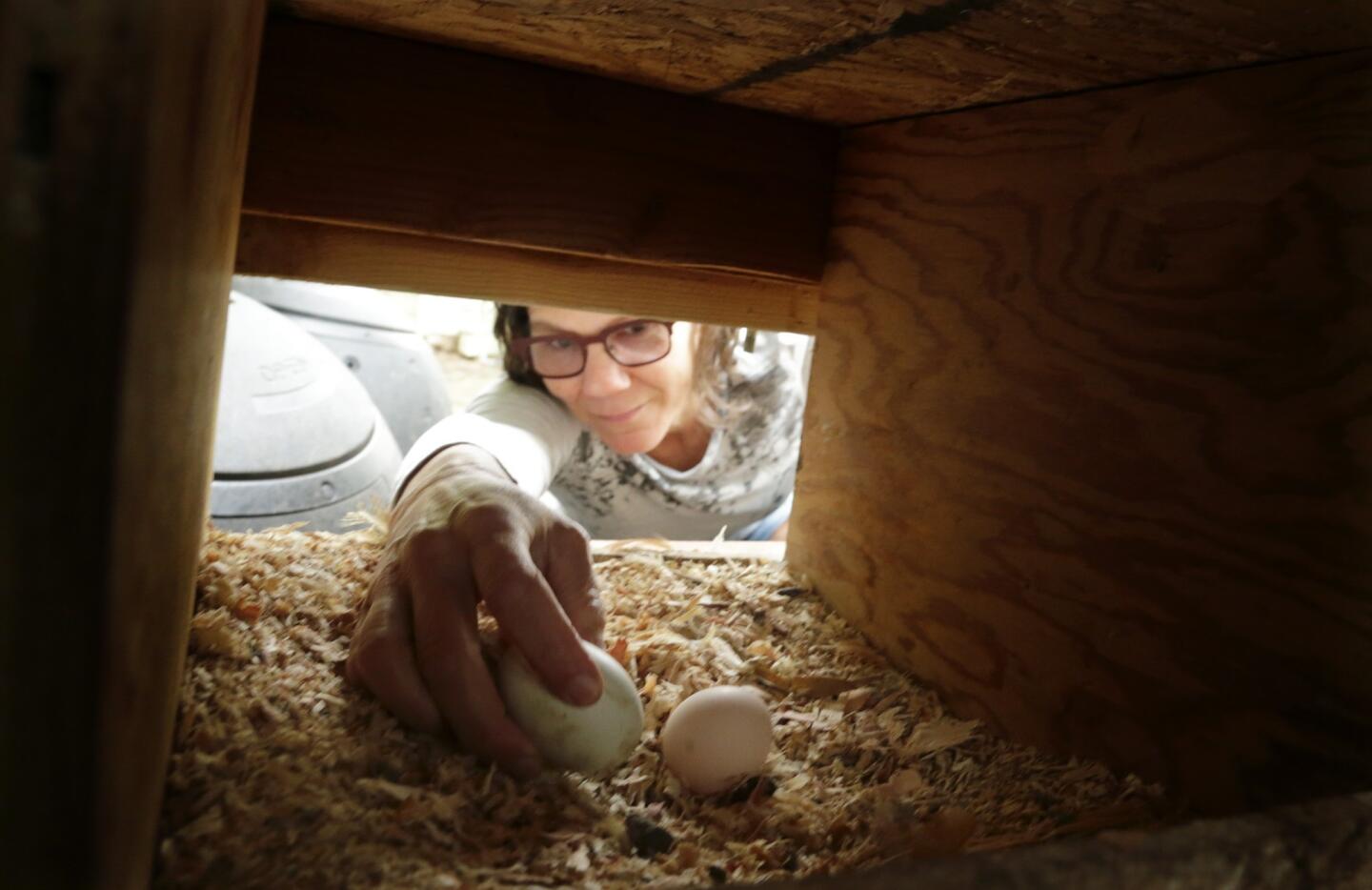
Julie Burleigh reaches in for eggs in her coop. She said her chickens average an egg a day. (Mark Boster / Los Angeles Times)
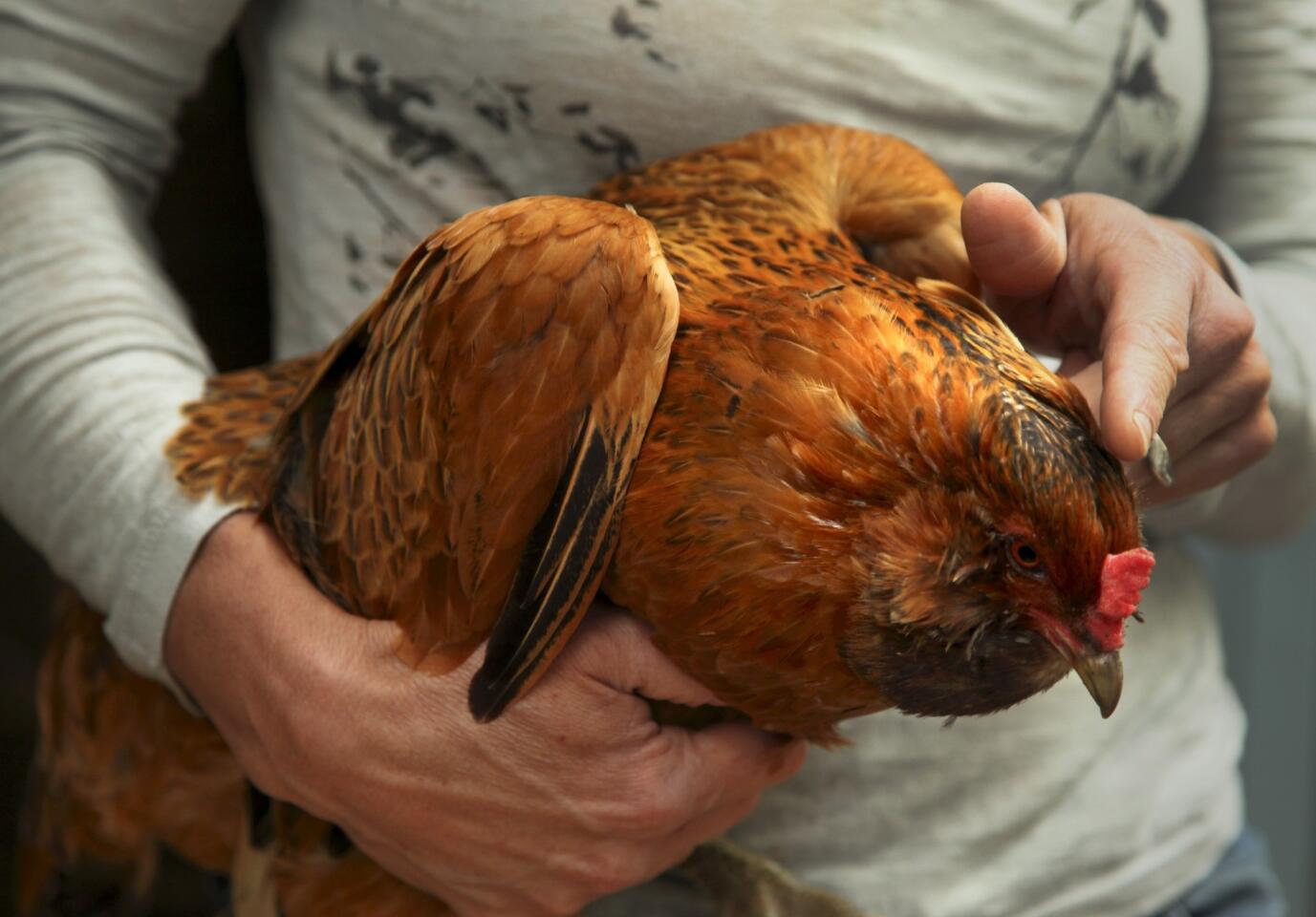
There’s no denying the chicken run is a delight, not only for Julie Burleigh, partner Catherine Opie and their son, but also for the neighborhood. By extending the chicken run to the front yard, Burleigh stays connected to her street. “It has been an incredible thing to watch and see,” Opie said. “It went from being a messed up lawn with two dead palm trees to this incredible environment where all the creatures are incredibly happy.” (Mark Boster / Los Angeles Times)
Advertisement
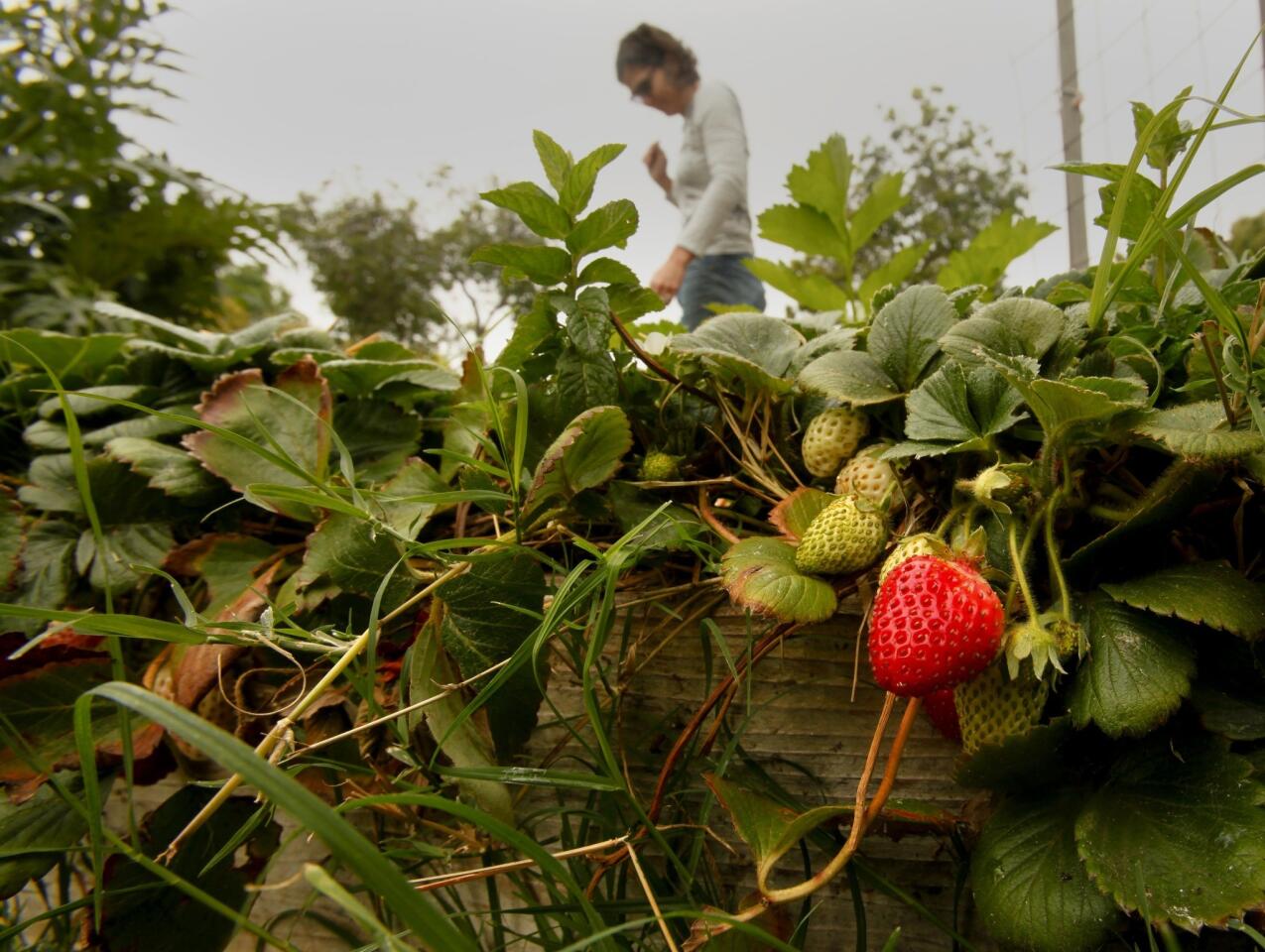
Burleigh can walk across the street to the community garden she helped to create on an abandoned lot. There, she is growing a surplus of food in two plots including strawberries, kale, parsnips, broccoli, snap peas, beets, asparagus and artichokes. (Mark Boster / Los Angeles Times)
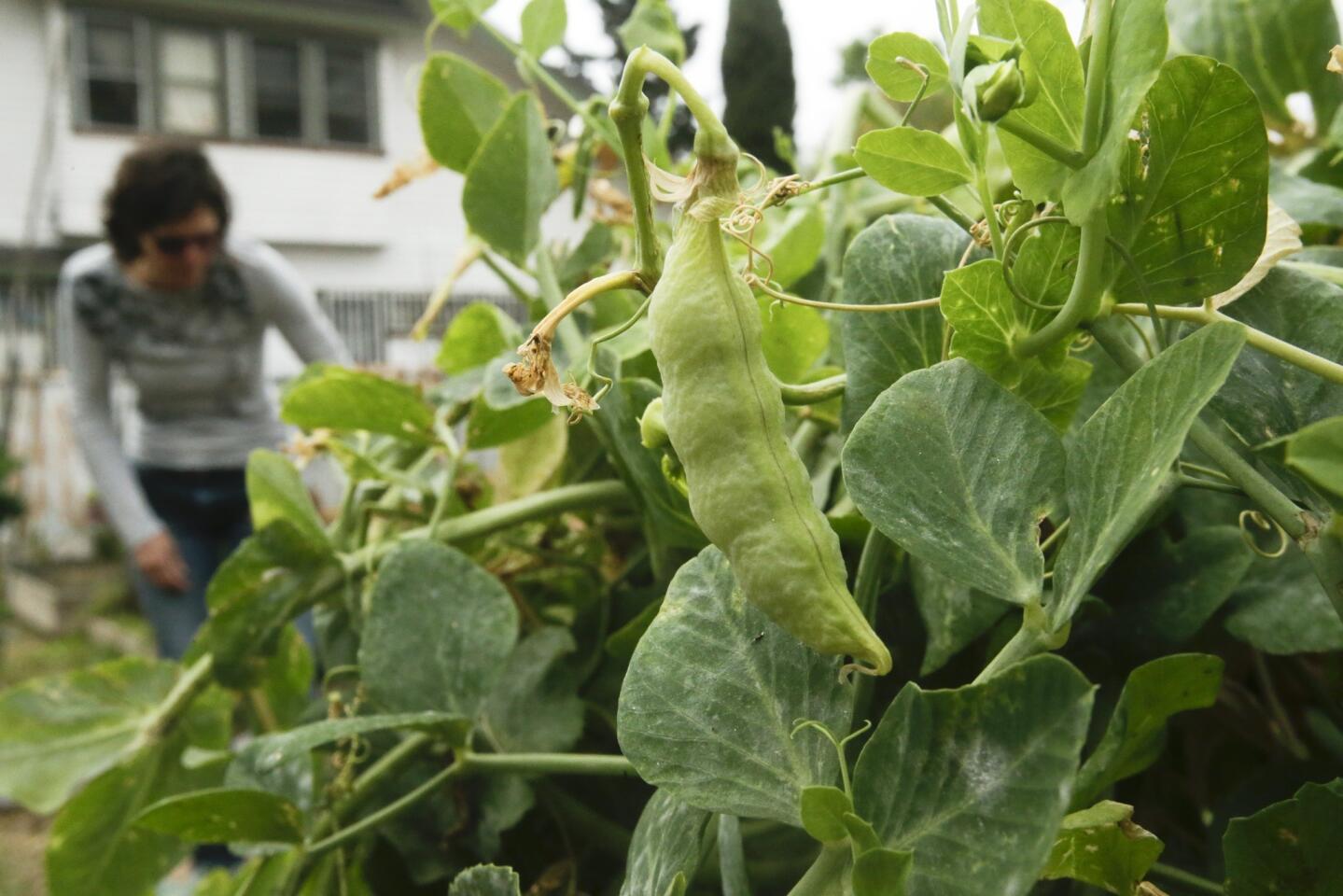
Snap peas in the community garden. (Mark Boster / Los Angeles Times)
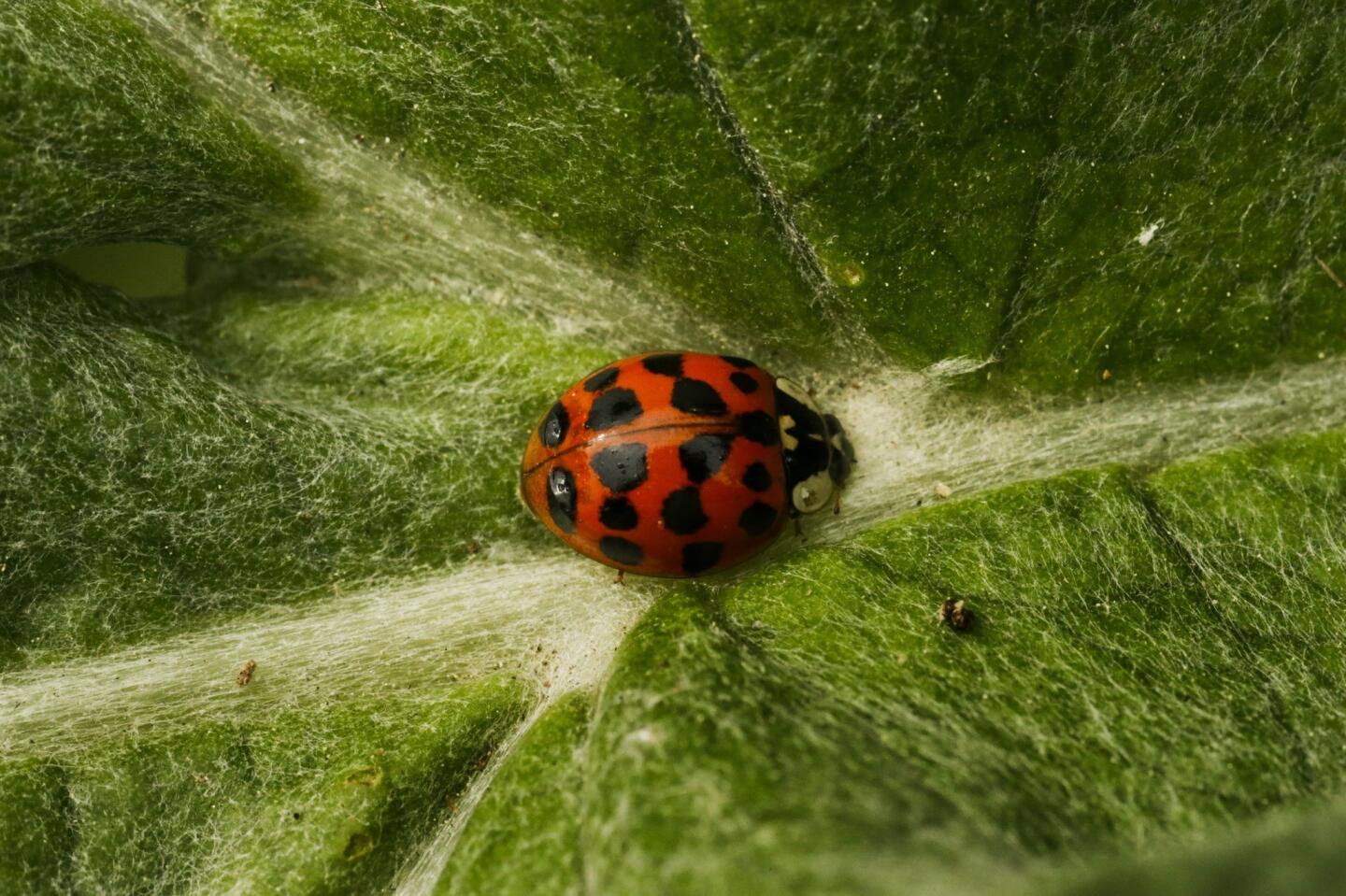
A ladybug traverses the broad leaves of an artichoke plant. (Mark Boster / Los Angeles Times)
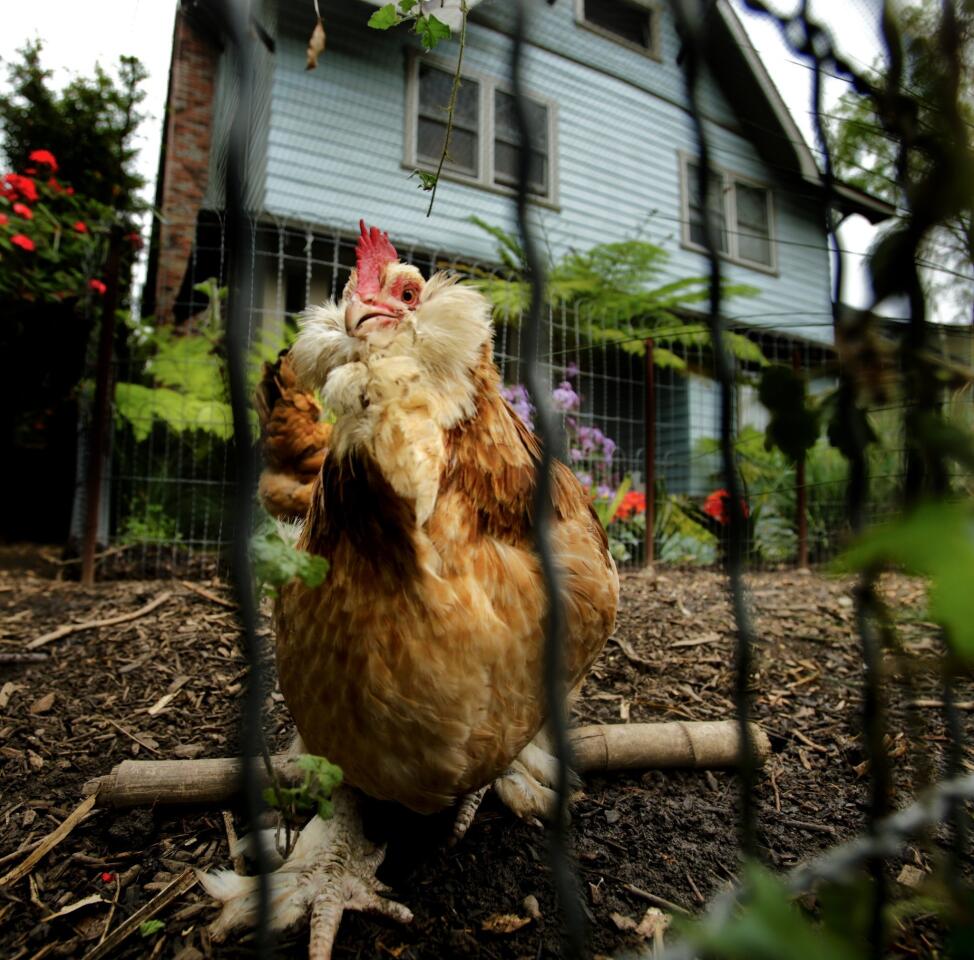
Back at the chicken run, a 7-year-old Salmon Faverolles named Carmela Sprinkles is the oldest of the group. Burleigh created the chicken run so they could have more room to roam, but she also wanted the garden to look good. She started with old-fashioned double loop wire fencing — “granny fencing wire,” she called it — discovered on Craigslist. She attached metal poles secured in concrete. To keep their dogs out and the chickens in, Burleigh topped the curving track with deer fencing, which is so sheer, it’s almost imperceptible. She then lined the ground with mulch and pine shavings and other organic matter. (Mark Boster / Los Angeles Times)



